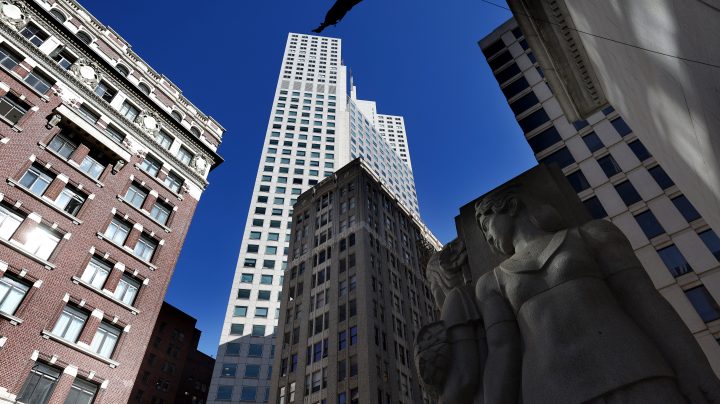
As workers slowly come back, big city office occupancy hits a new pandemic milestone
As workers slowly come back, big city office occupancy hits a new pandemic milestone

Last week — and for the first time since the pandemic began — average occupancy rates in offices in 10 major U.S. cities reached 50% of their pre-pandemic levels. That’s according to data from Kastle Systems, which tracks people swiping in and out of big office buildings.
But 50% of where it was before, three years into this pandemic? What exactly should we make of that?
Most places you go these days feel just as crowded as they did before COVID.
“People have returned to virtually every place they come together at levels comparable to pre-pandemic levels, whether it’s restaurants, or planes, or sporting events,” said Mark Ein at Kastle Systems.
The big exception? The office. “Up until a few months ago, a very tight labor market and a strong economy basically prevented companies from either making mandates or enforcing mandates, despite a desire to get people back,” Ein said.
But, since September or so, as uncertainty and fear about the economy have risen, Ein added that so too has the number of people going back into big office buildings in major cities like New York and Los Angeles.
Some of that is employers requiring it, but some is also people opting to go in more, per Kate Lister at Global Workplace Analytics.
“There’s the concern that if you’re not in the office, you’re going to be passed over for promotions and raises and the best projects,” she said. “And so as layoffs start to come, you start to think about, ‘Well, maybe I should be in the office.'”
Even though the numbers have ticked up a bit in those larger cities, they’re still low.
And in most of the rest of the country, “the number of days worked from home is slightly ticking down, but it’s incredibly stable,” said Nicholas Bloom, an economics professor at Stanford.
“Folks in big, shiny skyscrapers in big cities — think banks, think tech — are returning to the office,” Bloom added. “But the typical American, you know, is basically working at home as much as they were three months ago, as much as they were, in fact, six months ago.”
And it’s likely to remain that way for a while, he said.
If this is the new normal and big city offices are never going to be as full as they once were, Bloom said that could actually be a good thing for downtowns. “Because office occupancy is so much lower, many offices are being converted to apartments.”
Eventually, he said that should push rents down and make it possible for some people who’ve been priced out of cities to move back.
There’s a lot happening in the world. Through it all, Marketplace is here for you.
You rely on Marketplace to break down the world’s events and tell you how it affects you in a fact-based, approachable way. We rely on your financial support to keep making that possible.
Your donation today powers the independent journalism that you rely on. For just $5/month, you can help sustain Marketplace so we can keep reporting on the things that matter to you.

















